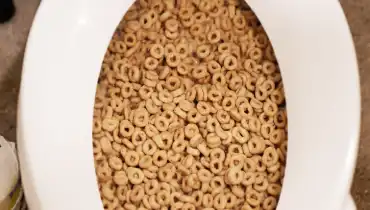Can One to Flush Food in the Toilet?
Can One to Flush Food in the Toilet?
Blog Article
How do you actually feel about Is it safe to flush food (especially rice) down the toilet??

Introduction
Many individuals are frequently faced with the problem of what to do with food waste, particularly when it comes to leftovers or scraps. One common inquiry that arises is whether it's fine to purge food down the bathroom. In this write-up, we'll explore the reasons that people might take into consideration flushing food, the effects of doing so, and different methods for appropriate disposal.
Reasons why people may consider flushing food
Lack of recognition
Some people may not understand the possible harm triggered by flushing food down the bathroom. They may mistakenly think that it's a safe practice.
Benefit
Flushing food down the commode might seem like a fast and simple option to throwing away unwanted scraps, particularly when there's no nearby garbage can offered.
Laziness
In many cases, people might merely choose to flush food out of sheer negligence, without thinking about the consequences of their actions.
Effects of flushing food down the toilet
Ecological influence
Food waste that winds up in waterways can contribute to air pollution and injury aquatic ecosystems. Additionally, the water utilized to flush food can strain water sources.
Pipes issues
Purging food can lead to blocked pipes and drains, causing pricey pipes fixings and inconveniences.
Types of food that should not be purged
Fibrous foods
Foods with fibrous textures such as celery or corn husks can obtain tangled in pipes and create blockages.
Starchy foods
Starchy foods like pasta and rice can absorb water and swell, bring about clogs in pipelines.
Oils and fats
Greasy foods like bacon or cooking oils need to never be purged down the bathroom as they can solidify and cause obstructions.
Correct disposal techniques for food waste
Utilizing a garbage disposal
For homes equipped with garbage disposals, food scraps can be ground up and flushed with the plumbing system. However, not all foods are suitable for disposal in this way.
Recycling
Certain food packaging materials can be reused, minimizing waste and reducing environmental influence.
Composting
Composting is an environmentally friendly method to take care of food waste. Organic materials can be composted and made use of to improve soil for gardening.
The value of appropriate waste administration
Reducing ecological harm
Appropriate waste management techniques, such as composting and recycling, assistance reduce air pollution and protect natural deposits for future generations.
Shielding plumbing systems
By avoiding the method of flushing food down the commode, property owners can protect against expensive plumbing fixings and keep the honesty of their plumbing systems.
Final thought
To conclude, while it might be alluring to flush food down the toilet for ease, it is essential to comprehend the potential repercussions of this action. By taking on appropriate waste monitoring methods and disposing of food waste sensibly, individuals can contribute to much healthier plumbing systems and a cleaner environment for all.
FLUSH FOOD DOWN THE TOILET?
FLUSHING FOOD CAN CAUSE BLOCKED DRAINS IN YOUR HOME
All of the plumbing fixtures in your home are connected to the same sewer pipe outside of your home. This outdoor sewer pipe is responsible for transporting all the wastewater from your home to the Council sewer mains. Even small pieces of food that go down the kitchen sink can cause problems for your sewer. It should therefore be obvious that flushing larger bits of food, such as meat, risks a clog in either the toilet itself or the sewer pipes. Flushing greasy food is even more problematic because oil coagulates when it cools, coating the interior lining of your pipes.
THE TOILET IS NOT A BIN
Food isn’t the only thing that people shouldn’t be flushing down the toilet. People use the toilet to dispose of all kinds of things such as tampons, makeup wipes, dental floss, kitty litter and even underwear. Water goes to great lengths to educate residents about the high costs and stress placed on wastewater treatment systems simply from people flushing the wrong stuff down the toilet. It costs taxpayers millions of dollars each year, and homeowners thousands in blocked drain repairs.
FLUSHING FOOD IS A WASTE OF WATER
Flushing food is a waste of our most precious resource - water. In June this year Level 1 water restrictions were introduced to protect water supply from drought conditions. Much of New South Wales continues to be affected by prolonged drought with recent figures revealing up to 97 per cent of the state remains in drought. Depending on whether you have a single or dual flush toilet, every single flush uses between five and 11 litres of water. In the current climate this is a huge amount of water to be wasting on flushing food that should be placed in the bin (or better yet, the compost).
https://www.jabplumbingsolutions.com.au/blog/can-you-flush-food-down-the-toilet

I recently found that post about Flushing Food Down the Toilet? when surfing around the search engines. Those who liked our post plz remember to pass it around. Thanks a bunch for being here. Return soon.
Call Today Report this page